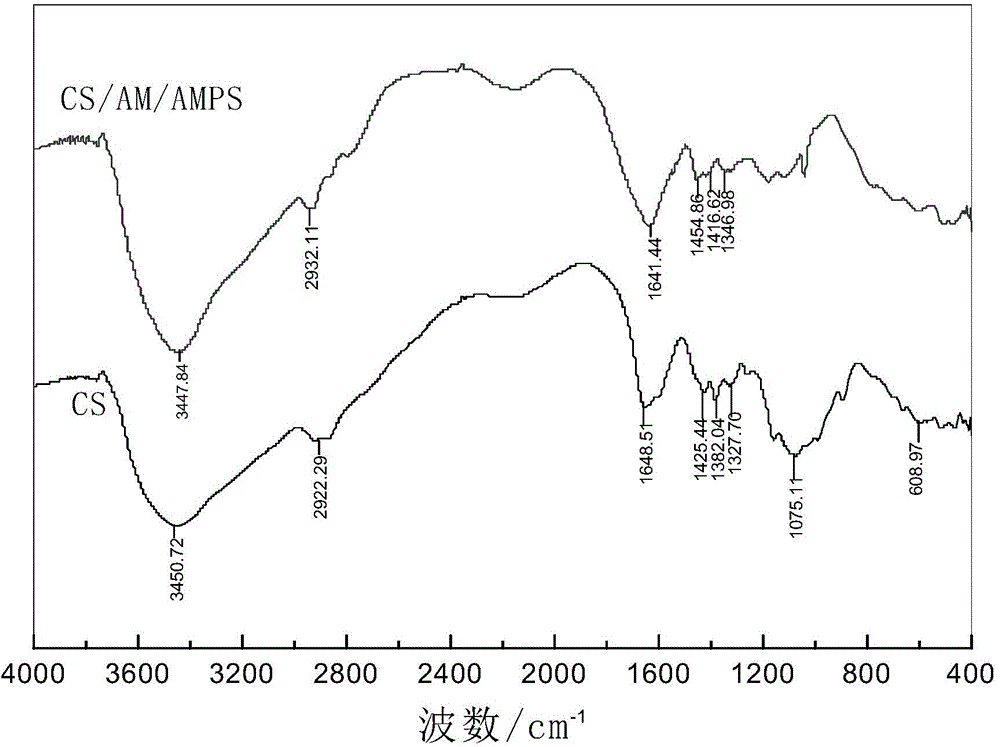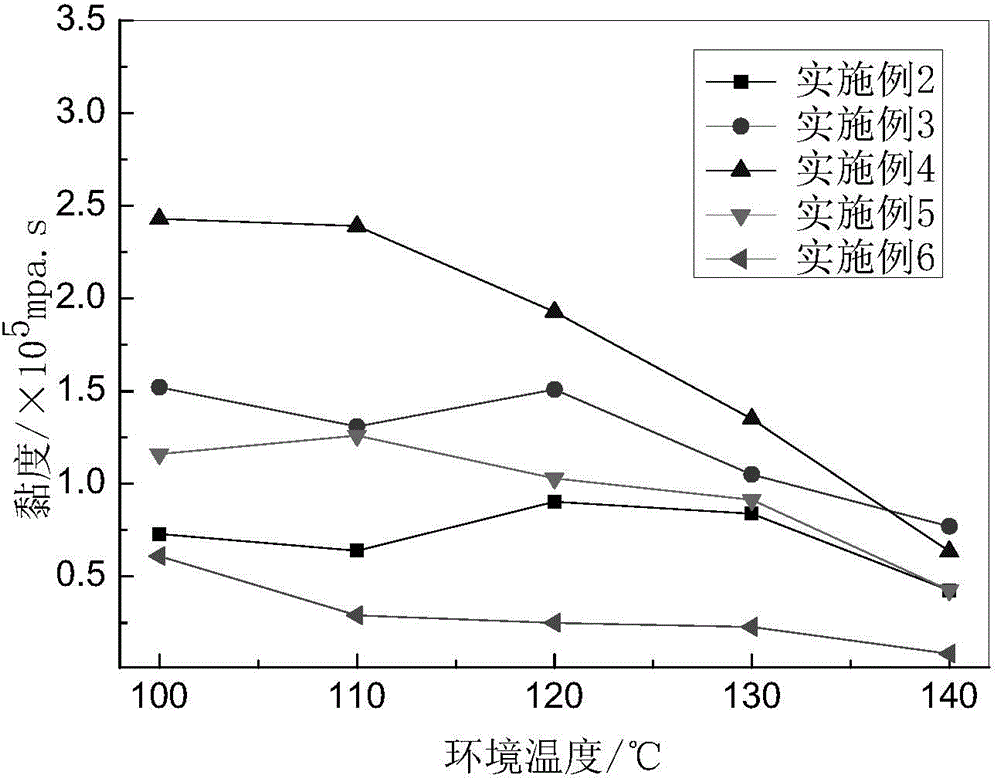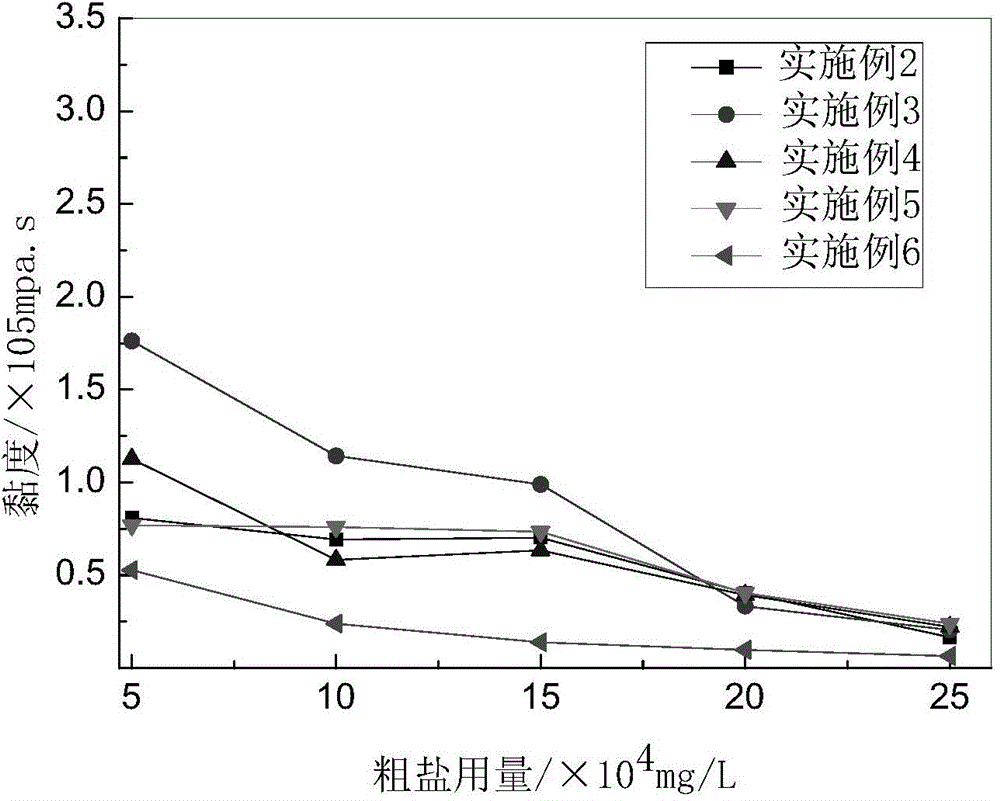Method for preparing cross-linking acrylamide profile control agent
A technology of acrylamide and profile control agent, applied in the direction of chemical instruments and methods, drilling compositions, etc., can solve the problems of poor temperature and salt resistance, pollution, etc., achieve good environmental protection, reduce production costs, and low cost Effect
- Summary
- Abstract
- Description
- Claims
- Application Information
AI Technical Summary
Problems solved by technology
Method used
Image
Examples
Embodiment 1
[0023] A preparation method of a cross-linked acrylamide profile control agent, the preparation steps are as follows:
[0024] Dissolve 0.1g of chitosan in 100mL of glacial acetic acid with a volume fraction of 2%, and then add 0.2g of potassium persulfate at 60°C, 2 An inert environment was formed, and after 10 minutes, 50 mL of a mixed solution of 10 g of acrylamide and 1 g of 2-acrylamido-2-methylpropanesulfonic acid was added to carry out free radical polymerization to form the first step product. Then the product of the first step was placed at 110° C. for nucleophilic addition reaction, and the reaction was performed for 3 hours to obtain a polymer gel.
[0025] After the polymer gel profile control agent and the cross-linking agent chitosan used were purified and dried, an infrared test was carried out to obtain an infrared spectrum, as shown in the attached figure 1 The spectrogram analysis results are shown in Table 1.
[0026] Table 1 FTIR analysis results of CS an...
Embodiment 2
[0031] After dissolving 0.1g of chitosan completely with 100mL of 2% glacial acetic acid by volume fraction, at 50°C, add 0.2g of potassium persulfate-sodium sulfite (the molar ratio of the two is 1:1), and pass N 2 An inert environment was formed, and after 10 minutes, 50 mL of a mixed solution of 10 g of acrylamide and 1 g of 2-acrylamido-2-methylpropanesulfonic acid was added to carry out free radical polymerization to form the first step product. Then the product of the first step was placed at 110° C. for nucleophilic addition reaction, and the reaction was performed for 3 hours to obtain a polymer gel.
[0032] During the test, the viscosity of the gel was measured with an NDJ-8S viscometer, and the temperature and salt resistance properties are shown in the attached figure 2 And attached image 3 As shown, the temperature resistance range is 100~140℃; the applicable coarse salt concentration range: 0~25×10 4 mg / L.
Embodiment 3
[0034] Dissolve 0.1g of chitosan with 100mL of glacial acetic acid with a volume fraction of 2%, and then add 0.2g of potassium persulfate at 55°C, 2 An inert environment was formed, and 50 mL of a mixed solution of 10 g of acrylamide and 1 g of styrenesulfonic acid was added after 10 minutes to carry out free radical polymerization to form the first-step product. Then the product of the first step was placed at 110° C. for nucleophilic addition reaction, and the reaction was performed for 3 hours to obtain a polymer gel.
[0035] During the test, the viscosity of the gel was measured with an NDJ-8S viscometer, and the temperature and salt resistance properties are shown in the attached figure 2 And attached image 3 As shown, the temperature resistance range is 100~140℃; the applicable coarse salt concentration range: 0~25×10 4 mg / L.
PUM
 Login to View More
Login to View More Abstract
Description
Claims
Application Information
 Login to View More
Login to View More - R&D
- Intellectual Property
- Life Sciences
- Materials
- Tech Scout
- Unparalleled Data Quality
- Higher Quality Content
- 60% Fewer Hallucinations
Browse by: Latest US Patents, China's latest patents, Technical Efficacy Thesaurus, Application Domain, Technology Topic, Popular Technical Reports.
© 2025 PatSnap. All rights reserved.Legal|Privacy policy|Modern Slavery Act Transparency Statement|Sitemap|About US| Contact US: help@patsnap.com



